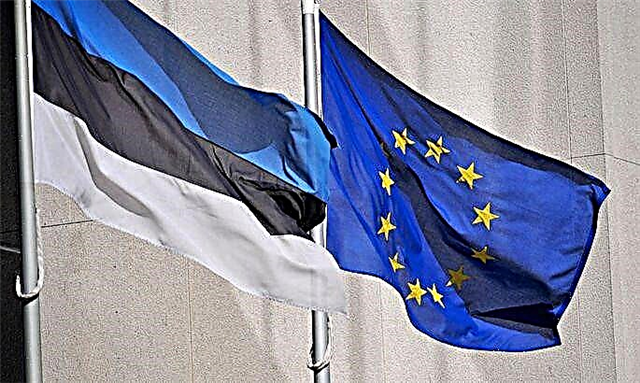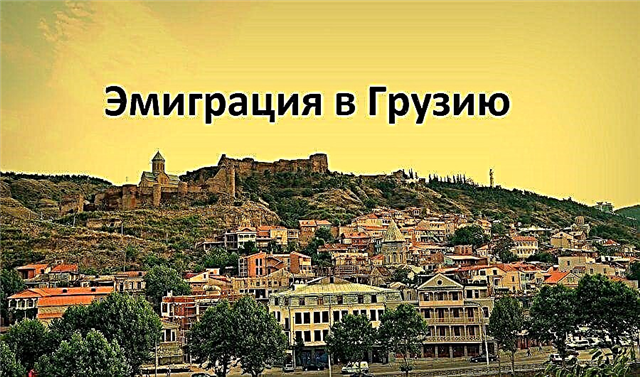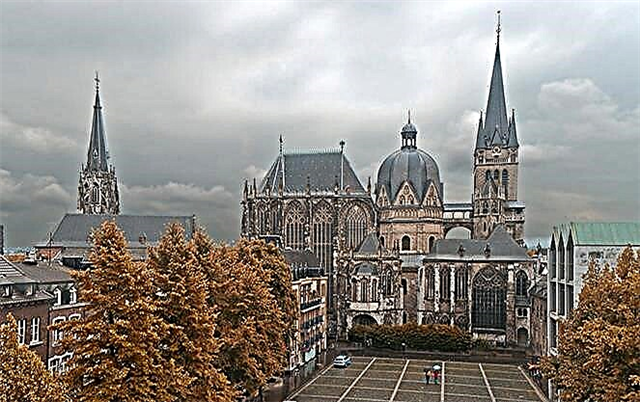Located in the city of the same name on the border of Germany, Belgium and the Netherlands, Aachen Cathedral is a magnificent historical monument that attracts a huge number of tourists. Under its vaults, the rulers of the Holy Roman Empire were crowned, German rulers ascended the throne. The walls of the temple complex bear the imprint of a thousand-year history. The building was destroyed, more than once completed and restored, but despite this, the Aachen Cathedral today has retained the original interior decoration.

How the cathedral was built
The idea to build a cathedral belongs to Charlemagne. Having received the crown of the emperor after the fall of Byzantium and its capital Constantinople, he conceived the idea of creating a new empire. And the majestic cathedral was to become the manifesto of his policy in stone. Charles wanted the cathedral to combine elements of architecture of the Eastern and Western Roman Empire, stylistic forms of Byzantine and ancient culture. Its foundation was laid in 795, when Europe was just entering the early Middle Ages.
The construction of the central part of the cathedral lasted for eight years. It was a Carolingian octagon borrowed from Byzantine architectural traditions. After the death of Charlemagne, this building was turned into a chapel-tomb of the emperor. Later, there were numerous additions to the cathedral, made in the Gothic style.
Over time, Aachen ceased to be the intellectual center of the empire, nevertheless, the interest of pilgrims to the cathedral only increased.
Since the XIV century, the city has been welcoming everyone to look at the cathedral, which is unofficially called imperial: for six hundred years, 35 German kings and 14 queens were crowned in the Aachen cathedral.
It became the first German site to be included in the UNESCO World Heritage List.
Tomb of Emperor Charlemagne
The three-tiered chapel, built next to the emperor's palace, was named Octagon. Its height was 31 meters, the diameter of the dome was about 32 meters. It was she who survived in its original form, while other buildings and choirs have undergone changes - they were dismantled and rebuilt in the Gothic style. You could enter through the majestic gilded bronze gates, each leaf of which weighed about two tons and was cast at a time as a whole.
In the center of the chapel lies a stone with the inscription Carolo Magno. Emperor Charles was buried here on the day of his death - January 18, 814. His grave was opened several times.

According to the annals of the Novalese monastery, compiled in 1048, the first time Charles's crypt was opened by the emperor Otto III in 1000. When the ruler entered the underground crypt, he was amazed - the body of Carolo Magno practically did not decay and was perfectly preserved: the emperor sat on the throne in a golden crown with a scepter in his hands. After that, the entrance to the underground chamber was again walled up.
The second time the tomb of the emperor was opened in 1165 by Frederick I Barbarossa during the canonization of Charlemagne. Frederick ordered the remains of the King of the Franks to be transferred to a jeweled marble box. They were kept in it for less than a hundred years - in 1215 Frederick II ordered the craftsmen to make a precious coffin of art work. In it, the remains of the emperor rested on the choir altar until the 18th century.
After that, the body was exhumed several more times (for research purposes), but eventually returned to the sarcophagus, which is now in the cathedral's treasury. In 2021, scientists confirmed that the remains did indeed belong to Karl.
The symbols of imperial power found in the coffin were transported to Vienna in 1798, and the marble chair, on which, according to legend, the emperor sat, was decorated with gold. For several centuries it served as the throne of the incumbent emperors, and now it stands under the dome of an octagonal hall.
Relics of the Aachen temple
Aachen Imperial Cathedral is famous for many relics. Some of them were taken to Paris in 1794 when the French occupied the city and later returned to Aachen.
Every seven years, believers can see the underwear of the Virgin Mary made of yellowish-white linen - the fabric in which the baby Christ was swaddled, as well as the Christ belt that was on him during the crucifixion.
In addition, a veil is kept in the temple, in which the head of John the Baptist was wrapped. It is no longer possible to establish the historical reliability of relics today, but all these items are of great value for pilgrims.
The treasury of the Imperial Cathedral in Germany also contains a silver bust of Charlemagne (it was made using a part of the emperor's skull), a Carolingian Gospel dating from the 9th century, a cross with the seal of Lothair II and other values.

The church in Aachen is also famous for its legends. They say that during the time of Charlemagne, who spent a lot of money on military campaigns, the money for the construction of the Octagon ran out. Only the devil agreed to help the inhabitants of Aachen, and on condition - for the soul of the first priest who entered the temple. However, when the construction was completed, the cunning Akhenians launched a she-wolf into the building. The devil realized that he was deceived, became very angry and slammed the door so that it cracked. Every tourist can see this very crack with his own eyes, as well as a fingerprint that the devil allegedly pinched. A statue of a black she-wolf has been preserved inside the building - it even has a hole through which, according to legend, Satan took the soul of the animal.
How to get to Aachen
Aachen is located in the federal state of North Rhine-Westphalia. On the map, you will find this region in the northwestern part of Germany, near the border with Belgium and the Netherlands. The easiest way to get to Aachen is by rail - Thalys trains connecting all the capitals and major cities of Europe.
For example, a train from Paris to Cologne stops in Aachen every three hours. From Brussels, the train reaches the city in an hour, from Cologne - in 36 minutes, from Paris - in 2 hours and 45 minutes.
Deutsche Bahn trains run from some German cities to Aachen. They can be used by tourists arriving in Essen, Deisburg or Dusseldorf. By the way, it is in Dusseldorf that the airport closest to Aachen is located.

From the main train station in Aachen, the cathedral can be reached on foot in 15-20 minutes.
Aachen Cathedral is open daily. From April to October, it works from 7 am to 7 pm, the rest of the time - until 6.
Admission is free, photography is allowed. Any tourist can order an excursion program in German or English - it costs 4 euros for adults and 3 euros for children. More information can be found on the official website of the cathedral.
Finally
Aachen Cathedral, given its age and stunning architecture, is certainly one of the outstanding cultural monuments that preserve the memory of several generations of German rulers. Today anyone can plunge into the atmosphere of the greatness of the past. Inside the Aachen Cathedral, you will see the legendary reliquary, stained glass windows, mosaic galleries, numerous sculptures - everything that rightfully allows the temple to be ranked among the church treasuries of Europe. It also includes the Berlin Cathedral, the Imperial Cathedral in Frankfurt, Ulm Cathedral.











